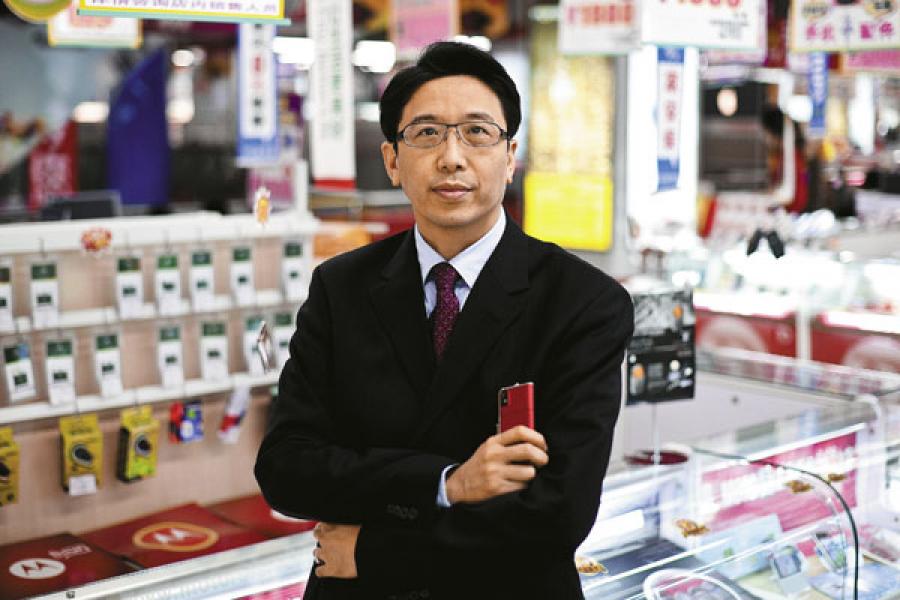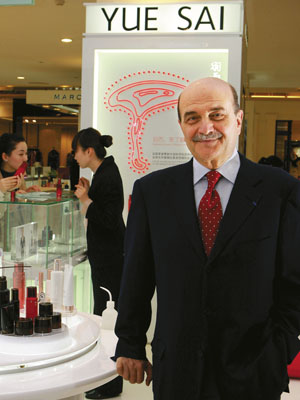
Beating Them on Their Own Turf in China
MNCs are figuring out how to overcome the territorial disadvantage vis-a-vis their local rivals when doing business in China
It was a deal that the Coca-Cola company had been eyeing for a while. Early last year, the world’s largest beverage company seemed to be on course to sew up a $2.4 billion deal to buy out Huiyuan, one of China’s largest juice makers. It was meant to be part of the cola maker’s big push to build a portfolio beyond cola in one of the world’s fast growing markets.
The government isn’t the only variable CEOs of foreign companies have to contend with. In the past few years, local players like Huawei, Haier, Lenovo, Baidu, ZTE and Alibaba have emerged as formidable competitors. These players have a much better grasp of the local conditions. They are nimble and street smart in bringing new products to market — something Western firms find hard to replicate. In order to win in China, global firms have to unlearn their traditional innovation formulas. And that often starts with drastically crunching the time it takes to create new innovations and take it to market. Says Anil Gupta, INSEAD Chair and Professor of Strategy, INSEAD, “The speed with which a market moves is highly connected to the rate of growth of the market. China’s GDP is growing at 10 percent a year whereas a developed country’s GDP is growing at an average rate of 2-2.5 percent.”
So how do you figure out a new operating model for China?
Localise, Localise, Localise
Gupta, who consults with many MNCs on their China strategy, says a lot of boardroom discussion today is on how to empower the Chinese subsidiary. He says, “For a MNC that wants to win in China, clearly you want to give local empowerment so that people on the ground can move with speed.”
Companies have started empowering local people. Microsoft floundered in China in the 1990s due to software piracy and complicated product localisation issues. In the later part of the decade, the-then CTO Craig Mundie realised running China operations out of Japan was a mistake. By 2003 Mundie separated Greater China as a region headed by Timothy Chen, who was earlier heading Motorola China. Chen steadied the organisation and ensured the region got enough attention from Redmond, changing the firm’s fortunes.
“Localisation in its many different dimensions is critical,” says Mark Norbom, president and CEO, GE China. “Local competitors are getting better in terms of quality, they are fast-to-market and they deliver products that the market needs. If we want to compete with them, we have to really localise our business here.” GE China started a programme called ‘In China For China’ (ICFC). ICFC essentially runs through the needs of the business based on the needs of their customers. Business leaders work very closely with GE’s research centre, or the China Tech Centre. “We have a series of products that go through the ICFC process which is funded globally,” says Norbom. GE Global CEO Jeff Immelt has earmarked special funding for China-specific products. This effort has started to bear fruit in terms of lower-priced product innovations that suit China. The Brivo CT scanner developed by GE China, for instance, costs 50 percent less than its competitors.
Some China R&D centres are evolving into global research hubs. Motorola set up its first China R&D centre in 1993. “We set this up to address local needs, but eventually it became a global research hub serving both Chinese and global markets,” says Rueybin Kao, Chairman, Motorola China.
L’Oreal invested heavily in local workforce, raw material, components, R&D, manufacturing and promotion. And now it is taking localisation to a different level. Some years ago L’Oreal acquired a high-end Chinese brand called Yue Sai which uses Chinese herbs. “We are expanding this understanding to find opportunities for other products,” says Paolo Gasparrini, President, L’Oreal China. In 2007 Coke launched the Coca-Cola Research Center for Chinese Medicine in Beijing. The idea is to develop beverages based on Chinese herbal ingredients.
The Tiered Approach
The real challenge in China is addressing the bottom of the pyramid. When L’Oreal entered China in 1997, its global high-end products addressed the top of the income and consumption pyramid. “But we were not covering mass market – the lowest part of the pyramid. We just didn’t have the experience,” says Paolo Gasparrini, President, L’Oreal China. To this end, Gasparrini acquired a local Chinese company called Mininurse. “The mass market is very Chinese, has local distribution and has many local competitors,” says Gasparrini. “Mininurse allowed us to understand the things we couldn’t understand with the brands that we already had in terms of distribution and the consumer.” The acquisition of Mininurse laid the ground for L’Oreal China to launch Garnier, their global mass market brand. “Our strategy is to segment the market with different brands,” says Gasparrini.
L’Oreal’s China product portfolio has several brands like Lancome, Giorgio Armani and Biotherm in the luxury segment, Mininurse and Garnier in the mass market segment, and also a portfolio in the semi-selective segment that lies between luxury and mass.
Figuring out a sensible market entry strategy is crucial. Tata Consultancy Services (TCS) chose to adopt a three stage strategy when it entered China. Girija Pande, EVP and head, TCS Asia Pacific says, “You just can’t go in like that – you can lose your shirt.”
In the first stage, TCS went after their MNC clients who were operating in China — the people they had done business with in India as well. Here the client was familiar and they offered them services in English — just like India. They learned from GE, Motorola and Cummins. “Because of them we learned and created competencies in China,” says Pande. Stage two was to go after regional customers and offer services in their language — the Japanese, Korean and Taiwanese companies. Stage three is going after Chinese customers for Mandarin-based services. This strategy allowed them to play to their strengths and gradually build their understanding of China. Global companies want sophisticated applications and enterprise-wide implementation. For regional customers many times it was BPO and language support. For domestic clients they brought in their financial products group to provide entire solutions. The last segment — Chinese customers — is very lucrative. And they have started tapping this by going after clients like People’s Bank of China and China Foreign Exchange Trading Corporation for core banking solutions and trading platforms.
Overcoming Drawbacks
MNCs are increasingly feeling the heat of Chinese competition. For every Ericsson, Nokia Siemens Networks and Cisco, there is a Huawei which is already emerging as a strong MNC with about 60 percent of its revenues coming from outside China. Google has a strong rival in Baidu. The likes of Volkswagen, GM and Ford have to contend with local car manufacturers like Geely and Chery. Says Terry Johnsson, VP, GM China, “We never expected to see 200-odd local brands emerge when we came to China. It is very competitive.” And there is also the “shanzhai” or cheap Chinese fakes to contend with.
One smart strategy is to piggyback on the growth of Chinese companies. “In China you may have a local competitor, but there are so many players, so my competitor’s competitor can become my friend,” adds Gupta. Before Google pulled out of China, it had a 35 percent marketshare in China’s search market (from a base of 16 percent five years back) whereas Baidu has 58 percent. The search engine market in China is increasingly moving towards online mobile search. Recognising that trend, Google zeroed in on China Mobile, by far the biggest player in China with 75 percent marketshare.
Local companies find it difficult to compete with the MNC distribution model. So the trick lies in creating local capability and building a much broader distribution base. Motorola’s distribution now covers several tiers of cities.
Starbucks has had several rivals over the years. While some have copied the concept, others have ripped off the logo or the brand name. Gupta says. “In a Starbucks operation what you are selling is experience and those who have tried to copy them have been unable to provide the consistency of experience.” Starbucks doesn’t have a rival with a national chain. It hasn’t felt the need to pull a rabbit out of its hat. Yet.
(This story appears in the 30 April, 2010 issue of Forbes India. To visit our Archives, click here.)
Post Your Comment
















